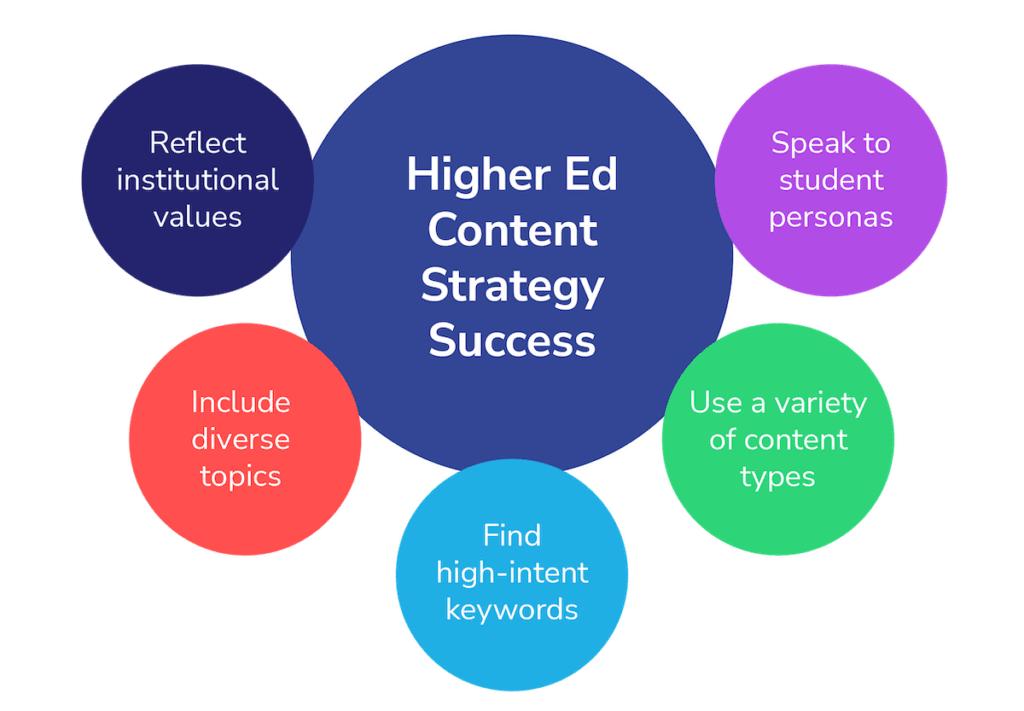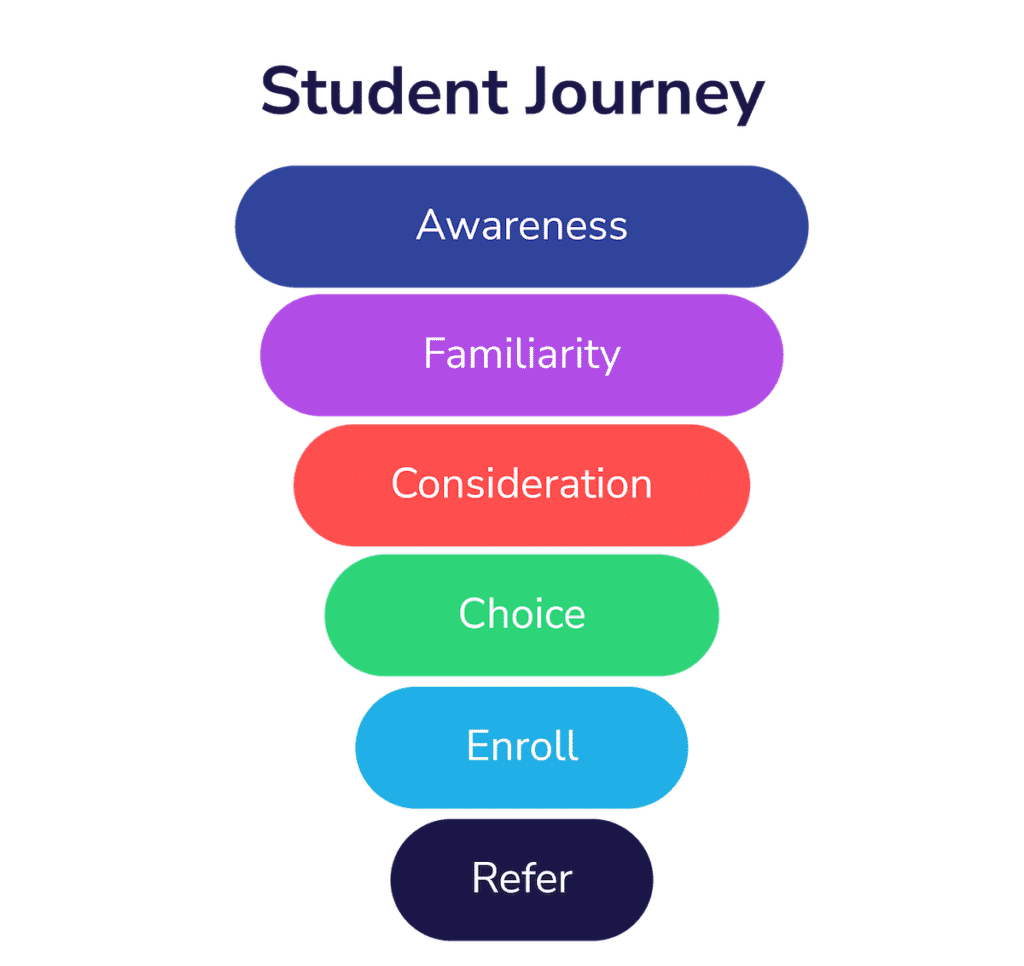Using Higher Ed Content Marketing to Increase Website Traffic
Nontraditional students make up a growing portion of the college population, and higher education marketers are vying for their attention. But what’s the best way to attract these elusive individuals to your institution’s website? Should you spark their sense of ambition, foster a sense of security, or offer no-nonsense advice on climbing their chosen career ladder?
To achieve content marketing success, you must first understand the nontraditional student market, which broadly consists of part-time and returning students, including many individuals who are financially independent or who have significant work or family obligations. This market contains the majority of postsecondary learners, according to the National Center for Education Statistics (NCES), and it includes a variety of categories of people, from single parents and full-time workers to retirees and career changers.
Next, you must determine your content focus areas. While you likely won’t reach all of your desired target audiences with one blog article, you can employ a number of tactics to reach key audience segments at opportune moments in their student journey.
Why Does Website Content Matter?
The content on your website can make or break a student’s decision to enroll in your program. Beyond making sure that your website is easy to navigate and that key program information is front and center, you’ve got to assure the student that you’re a credible institution. How can you do this? Provide information that not only informs but also engages them.
Some important things to keep in mind:
- Content should align with your institution’s brand and marketing strategies.
- Content should be diverse, high-quality, and calibrated for search engine optimization (SEO).
How to Create High-Quality Content for Nontraditional Student
The ultimate goal of your content strategy is to create content that increases your website traffic and lead conversions. To do that, your content must be valuable to readers to show that you are an authoritative voice on the chosen subjects.
For universities, this often means providing insight into which careers are in high demand and which degrees can help a learner reach their professional goals. But it can also mean sparking a reader’s passion, helping them overcome obstacles, or motivating them to follow their ambitions.
1. Establish a Stellar Content Strategy
Establishing a strong content strategy is the first step toward higher ed content marketing success. While it may seem daunting, taking the time to research and flesh out strong content ideas and topics will help you attract nontraditional students to your site. You should keep several things in mind while developing your strategy:
- Reflect institutional values. Study your program’s unique value propositions (UVPs), curriculum, and career outcomes, and pinpoint the qualities that set it apart from other similar programs. Then, brainstorm ideas for content that will reflect those qualities and attract the readers you want to engage.
- Speak to student personas. Research your program’s target audiences to ensure that your content hits the right notes. Some questions to consider: What are your target audiences’ professional goals? What challenges do they face? Which publications do they read? What motivates them to take action?
- Find high-intent keywords. Choose SEO keywords that will attract your target audiences at the right stage of their student journey. Start by anticipating which types of information potential students may be seeking as they consider taking the next step toward enrollment. For example, someone who Googles “why earn an MBA” is already thinking about the benefits of the degree and is likely starting to narrow down their options.
- Use a variety of content types. Include a mix of blog articles, longform pieces, faculty thought leadership content, infographics, and other formats on your program’s website. This variety can improve your chances of connecting with readers across a range of channels — organic search, social media, or links from other sites they visit.
- Include a range of topics. Balance degree- and career-focused topics, such as “What Can I Do With a Marketing Degree?” or “How to Become a Registered Nurse,” with topics that spark a reader’s passion, such as “Why Is Sustainability Important?” or “How to Make a Difference in Community Health.”

2. Create High-Quality Articles
Once your key stakeholders have reviewed and approved your proposed content strategy, you need to follow through with some high-quality articles. Strategies that writers should use when creating higher education content include the following:
- Incorporate elements such as striking statistics, faculty and student quotes, resource links, actionable step-by-step lists, and visual elements.
- Avoid repetitive language and “fluff” — provide real value by focusing on the information that is most important to the reader.
- Thoroughly proofread your content to avoid embarrassing mistakes.
3. Balance Content Quality with SEO Goals
We’ve all opened an article and realized immediately that the content was created purely to gain website traffic and provides zero value — making it likely that we’ll never visit that website again.
It’s important for higher ed content writers to use keywords in creative ways without turning off the reader. While keywords are an essential part of SEO strategy, you should avoid repeating the same phrase over and over throughout a piece, a technique known as keyword stuffing. Instead, create keyword variations that will still gain Google’s attention.
Ultimately, you’re not likely to gain those needed leads or conversions if the reader views your website content as repetitive and unhelpful. Therefore, you must blend the mission of providing high-quality content into your website traffic goals.
What Types of Content Are Nontraditional Students Looking For?
Nontraditional students are often at a turning point in their lives where they are looking to make a change in their career trajectory to meet a goal or solve a problem. They may also have more roadblocks than other students, such as having limited time for school because they’re caring for a loved one or working multiple jobs. As a result, nontraditional learners may use search terms that are vastly different from those used by traditional college students.
Engaging Topics
While nontraditional students come from a variety of backgrounds and life situations, there are some areas of content that will be of interest to many of them. This content might fall into categories such as the following:
- Industries that are experiencing strong job growth
- How to advance in a specific career or field
- The degree or nondegree programs that provide the most flexibility
- The return on investment for a specific type of degree program
- A program’s length and structure
- How to manage the school-work-life balance
- How to afford going back to school
Content Tailored to the Student Journey
Only one-quarter of the college student population consists of full-time students attending college for the first time, making nontraditional students the dominant learning audience, according to the NCES. As these individuals explore options for advancing their career or entering a new field, they need different types of information depending on where they are in their student journey.
- Top-of-funnel. In this early stage of the student journey, individuals are exploring broad industry or career topics. Readers might be starting to think about pursuing a degree, but they don’t have much information about their options yet.
- Mid-funnel. In this stage, individuals who are looking to get ahead in their career are exploring a specific professional field or degree area.
- Bottom-of-funnel. Individuals in this stage have decided which type of career, degree, or certificate they want to pursue and are looking for the program that best meets their needs.

Quality Content That Provides Value
Nontraditional learners need valuable, straightforward, specific information that’s easy to find and answers their questions about their career and degree options. Many elements come into play here, such as user experience (UX) design strategies and the details provided on enrollment and admissions pages.
But high-quality content writing is essential to growing your website traffic through blog posts and resource pages. Nontraditional learners don’t want to be placated or misled — they need to know that the investment they’re making with your institution is worthwhile.
Strike a Chord With Nontraditional Learners
Website content marketing needs to be an essential part of your institution’s marketing strategy. If you’re struggling to improve the quality of your organic leads and need to boost your site traffic through quality SEO strategies, our team at Archer Education can help.
We partner with higher ed institutions to help university executives and marketing professionals overcome their enrollment challenges. Our tech-enabled, personalized enrollment marketing and management solutions can help you too. Explore our content marketing for higher education services, or request more information about Archer’s full-funnel engagement strategies and digital student experience technology.
Sources
National Center for Education Statistics, “Demographic and Enrollment Characteristics of Nontraditional Undergraduates: 2011–12” National Center for Education Statistics, “Postsecondary Outcomes for Nontraditional Undergraduate Students”



